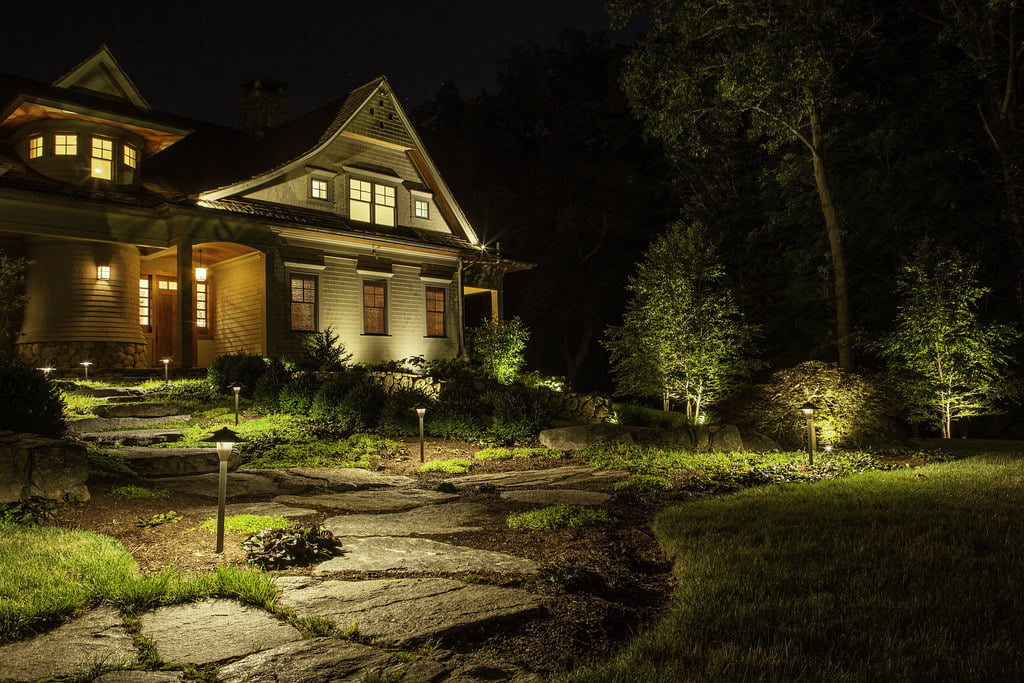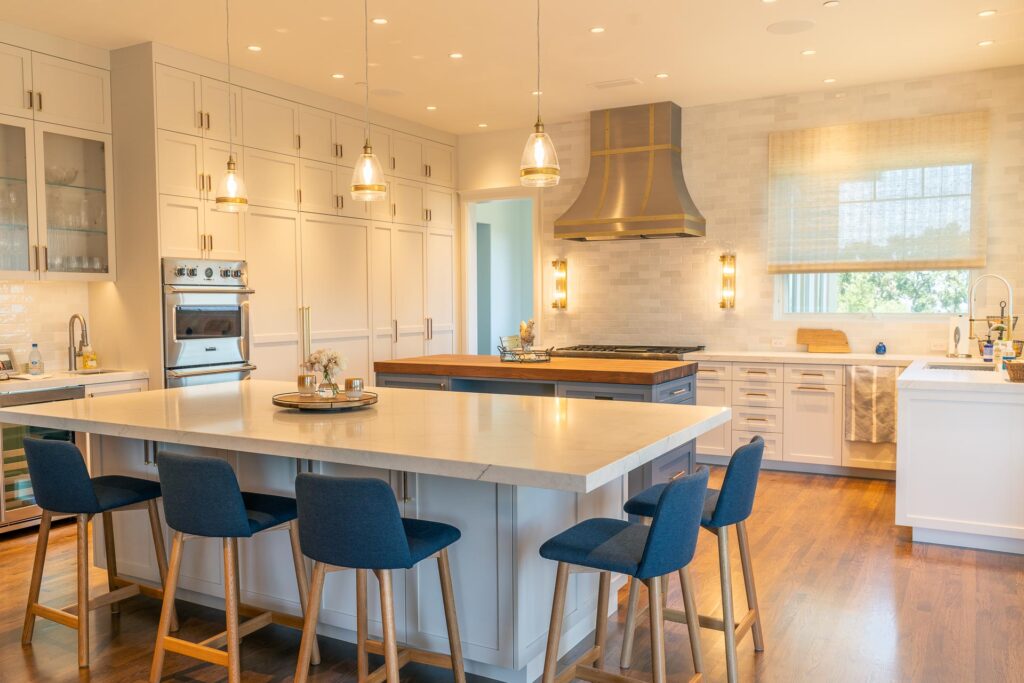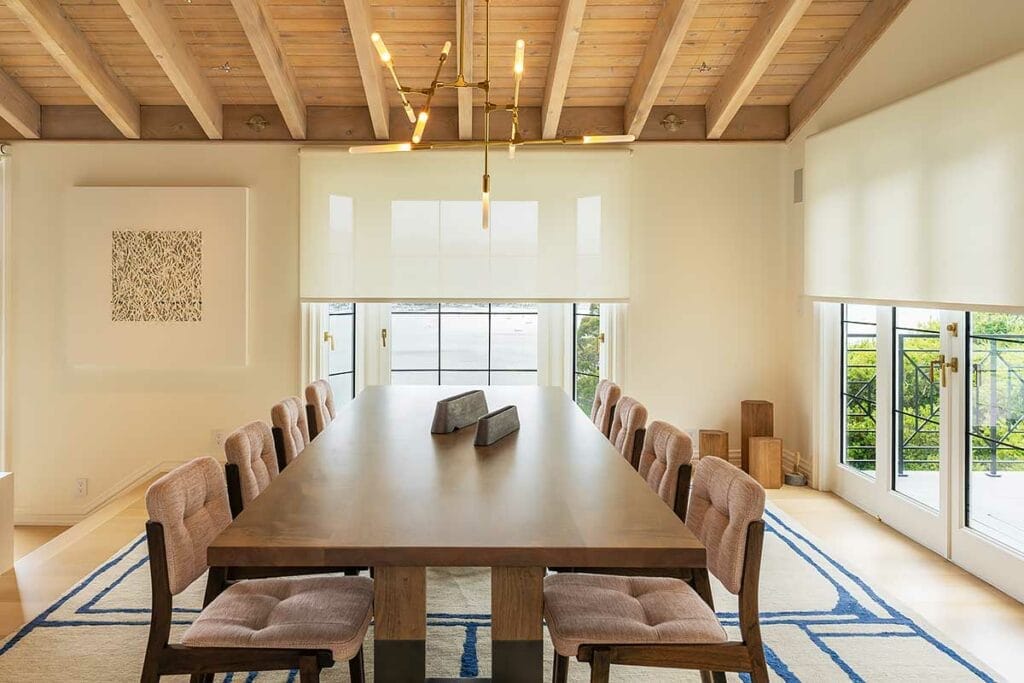
Layered lighting reimagines how you illuminate your space. Any light or set of lights that are controlled together is a lighting layer. For example, a kitchen may have a primary light and an under-cabinet light. Each lighting zone is controlled individually as its own layer. However, lighting layers don’t have to be exclusively functional. Harmoniously combining functional and aesthetically complementary lighting layers is a core element of lighting design.
How Layered Lighting Adds Style To A Space
Layered lighting is not just about function; it’s about using light as a design element. Think of it as fashion for your lighting, where different layers can make a statement and transform a space. Just as a complete outfit adds depth and enhances your look, layered lighting adds dimension, visual appeal, and ambiance to your home. Creating lighting layers that seamlessly integrate into your home’s design is an art.
Common Forms of Layered Lighting:
Although the term is not commonly used outside lighting design, most modern homes have layered lighting. We have an entire article outlining all the different forms of layered lighting. However, here are three of the most common forms of layered lighting.
Undercabinet Lighting – Task Lighting

Most kitchens have a separate light switch just for the under-cabinet lights. This is a form of task lighting. Task lighting illuminates specific areas for activities such as reading, cooking, or working. Task lighting is not a primary light source. Instead, it provides focused light where it’s needed most.
You can use your kitchen without your undercabinet lighting. However, undercabinet lighting can help you prepare food and perform other tasks on your counter. It’s designed to provide light that makes working in that area easier.
While under-cabinet lighting is predominately used for task lighting, it can also be used as ambient lighting. Leaving your under-cabinet lights on creates a nice, dim glow over your kitchen. This glow can be used to navigate your kitchen in the middle of the night.
Chandelier Lighting – Decorative Lighting

Chandeliers are decorative lighting commonly found above dining tables. Decorative lighting layers are made of light fixtures that enhance the aesthetic appeal of a space, often serving as a focal point or design element.
A dining room would feel borderline incomplete without one. In design-sensitive spaces, a chandelier’s ability to tie into the rest of the home is the largest concern. In many instances, in the pursuit of aesthetics, chandeliers don’t produce quality lighting. Fixtures like chandeliers are commonly used with more functional light to make the space usable and aesthetically complete.
Recessed Lighting – Ambient Lighting

While chandeliers prioritize aesthetics, recessed lighting focuses on functionality. Recessed lighting is commonly used for ambient lighting, which provides general illumination for a space. Ambient lighting creates a uniform blanket of light without causing unnecessary glare. In fact, the main reason to consider the aesthetics of ambient lighting is to make it as invisible as possible. Most primary spaces need some form of ambient lighting after the sun goes down.
The Drawbacks of Layered Lighting
While layered lighting has seemingly infinite benefits, there is one glaring drawback. The more lighting layers you have, the more difficult it is to control. If you have a kitchen with all these decorative light fixtures, they each would have their own switch or dimmer. Combined with switches of neighboring rooms, we have seen some people have six unlabeled dimmers all together! This makes your system unintuitive and aesthetically unpleasant with a mess of dimmers on your wall.
The effort needed to adjust so many dimmers to the perfect setting detracts from the benefits of layered lighting. Imagine sliding all your dimmers to create the perfect aesthetic, then needing to re-adjust them again to make the space more productive! Painful.
Addressing the Drawbacks of Layered Lighting
Thankfully, lighting control can address all the pains of layered lighting. Lighting control will replace a collection of dimmers into one elegant keypad. Each button can set all your lighting zones to the perfect setting. You can have one button that sets all your layers to look their best and another button that transforms your space for productivity.
Deciding How To Add Layer Lighting To Your Home
Are you inspired to transform your home with the elegance and functionality of layered lighting? Lighting By Design specializes in creating customized lighting solutions tailored to your home aesthetics while enhancing everyday living.
Our experts can help you design and install a layered lighting system that addresses all your needs, from task lighting in the kitchen to ambient lighting in the living room. Ready to take your home lighting to the next level? Contact us at 415-883-7700 for a personalized consultation and discover how layered lighting can revolutionize your space.




